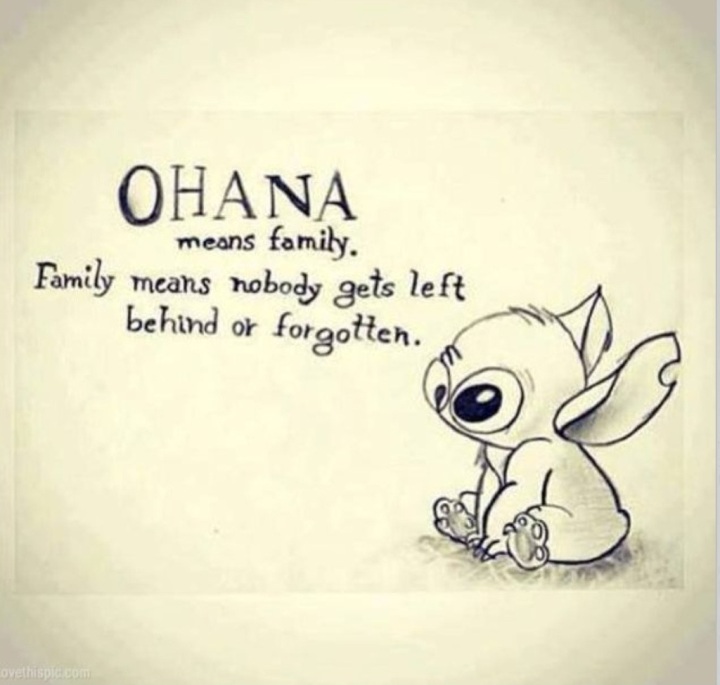Some local plants might be edible and even delicious, but they are either way to costly to grow or harvest, or they are nigh impossible to preserve. Or they simply are edible, but not sustaining, like sucking nectar from stinging nettle blossoms.
Some are acquired tastes like e.g. turnip tops. You could probably harvest tons of them, but there is no real market for it.
Or take edible flowers, you basically can’t preserve them, and all you can do is put them on a dish for decoration.
Pearl Onions are a borderline case, for example. Between harvest and sitting in the pickling juice they only have a few hours (3-6, IIRC), or they are a case for the compost heap.
This is dumb. Most plants resist cultivation. Bragging about being able to afford them does not make you Superior.
Also yields are important
I mean, I think that goes back to the whole “industrial farming” point. If it can’t be farmed, it won’t be commercially available. But there are plenty of plants that you could scavenge, if you knew what to look for.
One of my personal favorite niche plants is osha root. It’s one of the best cures for a sore throat. It tastes a little bit like dirty root beer, and it’ll numb your entire throat when you chew on it. Native Americans kept some around for medicine. You can even grind it up and smear it on shallow scrapes to numb the area. You can find it in teas like Throat Coat, which is a sort of secret weapon for performers and public speakers whenever they have a sore throat.
But it can’t be commercially farmed, because it exclusively grows in the Rocky Mountains where a specific type of fungus helps it thrive. It isn’t commercially viable to market to the masses like throat lozenges, (even though it is just as effective in reducing sore throats) because it has to be scavenged.
there are plenty of plants that you could scavenge
But what happens when “you” becomes a million people? A hundred million people? A billion people? Where I live, we can’t even have a nice field of flowers because a hundred Instagram models will trample and ruin it before spring is over. Scavenging and foraging literally cannot feed the 7 billion human mouths on this planet.
8 billion now.
If it can’t be farmed there cannot be enough for everyone, but it will be exclusive to a select few. How they are selected is irrelevant.
My point wasn’t that commercial farming is bad. With 8 billion people on the planet, it’s a necessity. My point was simply that scavenging to supplant your needs should be more encouraged, and the knowledge should be passed down.
Most people live in large cities where this is not feasible for everyone at once. Also transportation is expensive.
If you have a garden (I recommend far from the street to avoid pollution), some wild plants will grow in it. It’s good to know which ones you can eat and to be able to distinguish them from poisonnous ones. This way, weeding can become a sort of harvest.
Isn’t that what they meant by industrial agriculture preventing widespread use?
I think the point is it doesn’t prevent wide spread use. If a plant resists cultivation then it’s not worth it to try to farm, either industrially or in your back yard. Especially if you’re trying to farm for sustenance.
Lamb’s lettuce superiority! They don’t need cultivation, grow everywhere even if you don’t want them to grow, and they are quite edible, also delicious.
I mean there probably are lots of reasons why we farm only certain plants.
For example dewberries have short harvest window and as far as i know they need to be hand picked.
Blackberries are pretty rampant here in the UK. Always wondered why you guys didn’t have it- Seems they were banned in the US until recently due to some fungus.
Just to be clear, you mean blackcurrants, yes? Blackberry means something quite different, at least over here.
No I meant blackberries. We have both over here commercially available.
Ok, well I assure you, blackberries are, and never were banned in America. Blackcurrants were.
Oh my bad
Or why don’t we use all our technological, scientific and research knowledge to good use and engineer fruits and vegetables that can grow in less hospitable environments and can grow larger yields, have a longer growing season and have plenty of nutritional value.
Instead, we use all our knowledge and ability to build bigger, faster, more deadly weapons of war or AI that can micromonitor everyone’s lives or create slop and porn.
We do both. The problem is corporations and stupid people. See Monsanto, the non-GMO push and the results of golden rice or similar.
I meant create a food crop that is actually beneficial to humanity … not some empty nutritionless white styrofoam or equally terrible frankenstein corn that simultaneously destroys the land and the people who eat this so called ‘food’.
golden rice
Hi, I’m engaged to someone who studies chickpea and other legumes. Shitloads of money goes into agriculture every year and from my understanding, what you’re describing is being done by some brilliant people (I’m a bit biased). However there’s so many concerns around GMOs doing damage to the environment that it is tightly regulated. Doubly also, Americans don’t have the same ready access to grocery stores that
otherfirst world countries have.Plus the equivalent of flat earthers exist that believe that GMOs will kill us all and we need to go back to eating only what nature created (somewhat hyperbole, there are valid concerns but people have been irrational).
An example is that chickpea and other legumes reintroduce nitrogen into soil after the soil loses vitality, which makes chickpea a good intermediate crop that can be grown in between others. Its high in nutrients and has good yield. So yeah, stop eating corn and eat legumes/chickpea/hummus.
(I’m not the molecular biologist so if I got stuff wrong, sorry, I will pay more attention when my partner speaks)
I remember reading years ago that a vegetarian diet is far more economical and sustainable than a meat based diet. Which is why I lowered my meat consumption years ago. I still eat meat, just not as much as I once did when I was younger.
Even if humanity didn’t cultivate new vegetables and fruits, the produce we have now is more than enough to feed the planet. I think I remember that it takes just a few acres of grown produce to feed one person per year if they ate a vegetarian diet … whereas it takes ten times more land area to feed a single cow to feed that one person for a year in meat and vegetables.
I try to eat my legumes, especially lentils, since they are high in protein … but by far the greatest benefit that a vegetarian diet provides is the health benefits from the consumption of fiber alone. Full vegetarian or high vegetarian diets all around are far healthier and sustainable for humanity and the environment.
There is one thing that people miss about that whole “10 acres to feed one cow” statement. Yep, it can take that much land. But what doesn’t get said is that one cow can take advantage of land that is unsuitable to grow crops on like tomatoes, peppers, and onions.
In the US, California produces more fresh produce every year than any other state can. But it comes at a high cost of farming land that really isn’t naturally suitable for growing those vegetables. Farmers need to pump millions of gallons of water on those acres to get those crops to grow. This in turn puts pressure on the supply of water to everyone else in the state. And much of this farmland had all it could do to grow grass in some years originally.
Aquifers are going starting to go dry because of this. The vast Ogilala aquifer that supplies water to almost all of the US west is starting to go dry. Because we now are farming land that probably be best left to growing grasses for cattle, sheep, or goats rather than tomatoes or soybeans.
The other research I remember from my reading about this subject years ago was the efficiency of industrial farming. Per acre, industrial farming produces very low or minimal yields … whereas an acre that is tended, micromanaged and monitored by small scale farmers has much high yields. It meant that the only way for industrial farms to be able to produce large amounts of produce is to farm huge acreages in order to make up for the losses or inefficiencies.
One of the reasons why the Californian desert is drying up is that industrial farming is so inefficient that in order to sustain itself as a business model is for it grow ever larger and more invasive … it needs more land and more water in order for it to continually grow as a business. It’s not a way of farming that is meant to produce food efficiently for people … it’s a type of farming that is meant to produce profit, money and control for a corporation.
It’s feeding a monolithic corporation … it’s not feeding people.
All our world problems including global warming, food production, water supply are manageable and can be dealt with to help people in very efficient and possible ways … all of it is hindered and complicated by the fact that corporations sit in opposition to all of it because of their ever wanting need to turn a profit, even if it means destroying the environment and everyone who lives in that environment.
I hate that i cant find anywhere studies that takes the manure used as a fertilizer account in their calculations. Atleast where i live 100% of the manure from the animals is used as a fertilizer on farms and store bought fertilizers are just supplement. Most countries cant produce fertilizer enough for their agricultural need and need to buy it from outside.
I would love some real research wich would be better for the enivorent. Stop meat produsing completelly or scale it down so farms get still some benefits like fertilizer and biogas for the vehicles, but people would not eat food on every meal.
Im not geneticist, but i grew up on a farm. I always grind my teeth when people talk about miragle plants with high yields.
The plants need to get their energy and nutritions from somewhere. If you just create gmo plant that can absorb nutrition better from soil it also means you need to fertilize that soil that much more and make the crop rotation that much faster, or risk making the fields arid.
But plants that survive larger temperature shifts, more extreme weathers and pest might be necessary for us in the not so far future. Lets just hope in the future those are used for humanitys betterment and not making rich richer.
Eat your weeds… This is Common Purslane:

It grows mostly everywhere and is a huge source of Omega 3 fatty acids. It’s much better cooked in my opinion. Also it’s best to find them in a field and not by the roadside where it may be leeching up god knows what hydrocarbon adjacent type of poisons.
I pulled so many of these boogers out of the garden this summer
I think I have these in my yard. The ones I have grow along the ground like vines almost, strong stems and such. I’ll have to check when I get home but thats really cool, thanks for sharing!
There are fairly similar plants, so make sure to do your research. I get similar plants each year in my garden but I know they’re not purslane.
Omg people can eat these??? My horse goes absolutely crazy for these things
Now I gotta try some and see what all the fuss is about
Why is there a crummy phone ad in your picture?
Samsung’s pre-installed camera apps do that by default, I believe, unless you spot it and go digging where to turn it off (which seems do differ between some models, if I recall correctly)
Ok I’ll bite (literally), how does a person break into this niche, since it is definitely not a market? My engineering degrees did not heavily cover edible plants in my area? I can go find morel mushrooms and identify sassafras but that about covers it.
If I could buy like a ring of +4 to local botany that would be best I think.
On android you can use an app called “PlantNet” to take a picture of a plant and find out what it is. I’ve learned about many of the plants growing around me this way and have found new edible things. Garlic mustard is a good example. It’s invasive but edible and pretty good, so eating it is also protecting local ecology.
Please do not consume plants based on a visual ID by a convolutional neural network. It’s a dangerous and fundamentally flawed approach. Many plants can only be properly identified by observing specific parts that don’t turn out from a single angle photo, such as formations on the underside of leaves, or a specific curl direction of a flower stamen etc. etc.
Well, yeah if you want to eat something you want to be sure. Even if you only take one photo, you can look at pictures of the leaves, flowers, and fruit. There’s a link to other sources, like Wikipedia, where you can get more info.
The app allows you to take several photos, label those parts (“leaves”, “flower”, etc.), and then you get several results, sorted by correspondence according to the neural network. When you click on a result, you get photos of different parts of the plant, allowing you to compare to your plant and judge if they’re the same.
For those in the UK: https://www.wildfooduk.com/
For me, it helped expand my cosmos by leaving things out and looking for alternatives.
Like, I found out about a world of legumes by going vegan. And earlier this year, I stopped eating wheat for health reasons, and only then started to appreciate the existence of millet, quinoa, amaranth, buckwheat etc…I am probably still within the range of “usual” foods, all things considered, but at least I’m breaking out of a tiny subset of those…
“ CaPiTaLiSm bReEdS InNoVaTiOn “
Tbf, many are kinda disgusting to modern palettes. Lamb’s quarter sucks compared to stuff like spinach, kale, or collards. Pokeweed needs extensive preparation to make it safe. Wood sorrel, horseherb, and prickly pear grows where I currently live, but I haven’t tried them yet. My dog likes horseherb despite the little spines for some reason. My grandmother used to fry dandelions and plaintain which was pretty good.
Wood sorrel is an interesting case. In the US, we don’t commonly eat our native wood sorrel, i.e. the thing that looks like clover. But we do eat starfruit. Starfruit is also a type of wood sorrel, just one that has a much larger, sweeter fruit, that’s been selectively bred for agriculture. But if you look at the fruits of our native plant, they do look like tiny starfruit! link
They’re still tasty. They’re very tart, but with no sweetness. They could be good to top a salad. But you’d have to pick hundreds of them to get as much food as you get from one starfruit, and it wouldn’t be as tasty as a fruit. Like eating a lemon instead of an orange.
That said, I still love them! The leaves and stems also have a good taste. They’re everywhere and have a lovely burst of flavor. Just be careful if you have kidney stones or kidney disease, any kind of wood sorrel - including starfruit - has oxalic acid which can be tough on kidneys.
For another example of a plant that just didn’t make it into modern society at scale, there are skirrets. Carrots, parsnips, and skirrets were related umbellifer plants with edible, nutritious roots, cultivated over the centuries as food. Carrots and parsnips were responsive to breeding for root size, and could produce comparatively huge roots, but skirrets never really did. Once the potato was brought over from the new world, the skirret fell out of favor.
How do you get dandelions to not taste like poison?
She made something like this: https://www.allrecipes.com/recipe/214172/fried-dandelions-appalachian-style/
Oh, the flowers. The leaves are edible and even taste good aside from the bitterness
Every September, I make a year’s supply of beautyberry jelly.
I do something that I don’t recommend people do: I can it. I’m like 5 years in, and I haven’t had a problem yet. There’s a series of pages in my Ball canning recipe book that the beautyberry jelly recipe I use conforms pretty close to, but it isn’t USDA approved or otherwise published by some authority as safe for canning, I’m going to recommend you avoid this.
Beautyberries, if you’re not familiar with them, are a bush/shrub native to the American southeast. The plant looks like a bunch of stems with leaves that grow along them, along with clusters of tiny white flowers in the spring at the base of each pair of leaves, that turn into vivid purple berries in the fall. The leaves can be used as a mosquito repellent if rubbed on clothing, and the berries are edible…although they’re bitter and astringent. Boiling them in water to make an extract and making jelly from that extract results in a bright red jelly that tastes like strawberry and tea.
It’s something of a pain to harvest, so it pretty much isn’t commercially done.
Everything I’ve seen from Ball/Kerr has been safe canning recipes! Love their stuff, use their website for recipes often.
Oh I’ve misread. You picked a berry close to it and are substituting that in, yeah? I’d try it on myself but probably wouldn’t give it away.
Sounds like a beautiful jelly though!
Yes, I have Ball’s Complete Book Of Home Preserving (which is a terrible title, as the book contains no information about dehydrating, freeze drying, jerking or brewing, only water bath and pressure canning). It has a procedure for “berry” jelly where it lists half a dozen different kinds of berries and how to extract juice from them, to include elderberry, and then you use a quantity of said “berry” juice in a standard jelly recipe. Independent of this, I’ve found a beautyberry jelly recipe that resembles this procedure, so I feel okay canning it, and have done so for years now. I’m going to stop short of recommending it to anyone else. By all means, if you’ve got access to beautyberries, make the jelly, but can it at your own risk.
No beautyberries here! Tons of wild grapes though. Horrible producers those are though. All vine and no grapes!
Paw paws grow naturally in the area I live and are a delicious fruit. Due to cultivation and transport issues you will never find them in stores.
My grandpa had a pawpaw tree in his garden in rural MO and I always wondered how they taste.
Although RFKjr has some crazy ideas, not adding food colouring to the balanced diet pyramid is not one of them, and one that any other GOP fascist loyalist, given the job, would gladly do it if given a dollar for it. Energy secretary as an example is full oligarchist energy protectionism.
there are some other problems too. I would love to scavenge or grow things here, but the town I live in is basically built on a gigantic industrial waste dump, so eating anything out of the ground here is a bad idea.
That’s what the government says. But I know the truth - I know it’s the queers! They are in it with the aliens to build landing strips for GAY MARTIANS! I swear to god!
I like you Stewart, you’re not like the other people. Here in the trailer park.
There’s so much hogweed all over the UK that’s just sitting there, uneaten. Not the giant stuff, that’s not a fun time. But the regular stuff has good flavour
Also tons of wild garlic when the seasons in
To clarify, when knowone says “that’s not a fun time” they don’t mean “oh it tastes bad”. They mean it’s really not a fun time, avoid going anywhere near giant hogweed!
https://en.wikipedia.org/wiki/Heracleum_mantegazzianum
NSFL (if you’re squeemish):
Thanks for clarifying for me. Yeah I should’ve maybe given a clear do NOT go picking hogweed to eat, or even that near it, unless you’re absolutely sure you can identify one from the other. Despite it’s name, giant hogweed is very often just as large as the common hogweed surrounding it. It still needs to grow to that size, after all
My daughter is kind of becoming a horticulturalist and recently taught me that sumac (there are non-poison varieties) can make something akin to lemonade if you dip the berries into water and then filter the water back. They have a citric-acid-like outer shell that dissolves in water.
And we’ve eaten so many mushrooms and stuff - thanks to communities on the internet who have categorized lookalikes, where to steer clear of certain types (white mushrooms, don’t even bother. Half of them will kill you)
Do people (in general) really only eat 100 different plants? I feel like that number must be too low. Surely if you listed out all the plant foods that people consider “normal”, there would easily be more than 100.
Depends if you count spices I guess but most people only consume like a handful of different veggies all year long
I’m tempted to start a list. Sure, the majority of our food will be a handful of staples, but I feel like the average person from a rich country must eat quite a variety between seasonal variations of the food they eat at home, eating out, eating at a friends place, fast food, slow food, etc.
If I wrote a list, I think I would find over 100 different plants in the last year. If I have take out dumplings, I’d probably be eating onion, garlic, a couple of kinds of cabbage, soy sauce, sesame oil, pepper, carrot, ginger, maybe more.
It might be a shorter list without the flavourings but I still think I’d hit 100.
I guess it also depends if you consider different lettuce/cabbage varieties as different plants. Which I guess is the point of the discussion! so fair. I also dind’t really think about stuff like soy sauce and oils as plants but I guess they are
Yeah you’d have to set some criteria for the list! Does any amount count or do you set a minimum that eliminates many spices? And if you do, then you’re counting things on one person’s list that aren’t on someone else’s.
People probably eat 1000 foods in a year if we have no minimum amount!
Might be considering all Brassica as one.
Dewberries are so fucking delicious. I used to go pick them and make dewberry pie as a kid. God I miss that, they don’t grow where I live rn 😔












